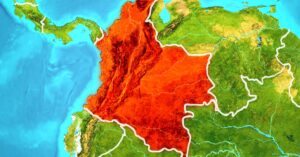How a 26-year-old expat in Seoul, South Korea lives on $24,000 a year
7 min read
This story is part of CNBC Make It’s Millennial Money series, which details how people around the world earn, spend and save their money.
Not everyone can say they’re living out their childhood dream, but Michaela Cricchio can.
These days, Cricchio, 26, calls Seoul, South Korea, home. She wakes up every morning in an apartment in the city, hops on the subway and gets to school to teach English to elementary school students. On the weekends, she meets up with other expat friends to explore Seoul’s cafes, restaurants, art galleries and city life.
She’s called South Korea home since November 2019, when she left her hometown outside of Washington, D.C., to live and work abroad.
“Living abroad is great because you get to experience a whole new culture, customs, food, meet incredible people,” Cricchio tells CNBC Make It. “I’ve created such strong friendships here. I’ve seen so many amazing things that I would have never been exposed to if I decided to stay home.”
Here’s how Cricchio made the leap from debt-saddled college graduate to cruise-ship worker to English teacher living abroad on $24,000 a year.
Michaela Cricchio, 26, earns $24,000 as an English teacher in Seoul, South Korea.
CNBC Make It
Fulfilling a life-long dream
Cricchio was obsessed with the idea of traveling as a kid — she counts Samantha Brown and the late Anthony Bourdain as some of her childhood idols. But her parents and three older siblings weren’t as interested and the family only took domestic trips to see relatives in the U.S.
But while Cricchio was studying international relations at Virginia Commonwealth University, a professor introduced her to the idea of teaching English abroad as a way to see the world while earning money. She researched a few programs, but couldn’t afford the $1,000 price tag to join a program, get certified and apply for a visa.
Before she could look into other, more affordable options, Cricchio got a financial wakeup call: In 2018, “three days before I graduated, my dad gave me a spreadsheet and was like, ‘These are all your bills you have to pay now that I’m not helping you anymore.'”
One big bill she was on the hook for: around $16,000 in student loans.
Cricchio took the “tough-love” lesson to heart and got a job on a cruise ship as a kitchen steward and server, where she could earn $2,000 every two weeks and live rent-free. During her second contract, she was able to save up $13,000, so she decided to revisit her teaching abroad plans.
Michaela Cricchio’s school pays for her rent on a studio apartment in Seoul.
CNBC Make It
Cricchio took an 11-week course online with the International TEFL, or Teaching English as a Foreign Language, Academy to become certified to teach English. She chose to teach in South Korea because she heard the cost of living there was very low. All told, she spent about $1,300 to get her teaching certification and working visa, then booked a one-way ticket to Incheon International Airport outside of Seoul.
“I remember getting on the plane my first year and thinking, ‘What am I doing? I’m crazy. Who told me this was a good idea?'” Cricchio recalls. “But honestly, the risk was all worth it because of the rewards that I got out of it.”
How she spends her money
Cricchio is currently on her second year-long contract teaching English in South Korea. She works with elementary school students at a hagwon, or a private academy, and earns $24,000 a year.
Here’s a look at how Cricchio typically spends her money, as of May 2021:
Elham Ataeiazar for CNBC Make It
- Savings and Roth IRA: $650
- Food: $391 for groceries and dining out
- Discretionary: $193 for entertainment, travel and shopping
- Utilities: $154 for electricity, heat, water and Wi-Fi
- Transportation: $108 for a subway pass and cabs
- Student loans: $100
- Health insurance: $73
- Phone: $61
- Apple Music: $10
Cricchio gets paid in South Korean won into a Korean checking account. Each payday, she sends a portion of her paycheck to her U.S. bank accounts, where she keeps her savings and investments and pays recurring bills. Anything left over in her Korean account is “fun money” for everyday spending.
The biggest reason Cricchio can live comfortably in Seoul on her salary is because her school covers her monthly rent for a fully-furnished studio apartment in the city. She says rent is typically covered for foreign English teachers in the country, though some people prefer to get a housing stipend and choose their own accommodations. She covers her own utilities, which aren’t too expensive — her Wi-Fi bill is just $15 a month.
Without the expense of rent, Cricchio is able to save about half of her paycheck. She sends $650 directly to her U.S. savings account every month, then transfers $50 a month into a Roth IRA.
Michaela Cricchio saves money by cooking for herself during the week so she can splurge on weekends out.
CNBC Make It
Cricchio still has $15,220 left to pay on her student loans. She’s currently taking advantage of Covid relief that allows her to pause her payments without accruing interest through September. She puts $100 per month toward her debt and contributes a little extra, around $30 to $50, if she has money left over at the end of the month. She hopes to pay off the balance within four years, but will have to get more intentional with her payments to reach that goal.
As a teacher, Cricchio gets paid just once per month. “I know that sounds crazy to a lot of people — it sounded crazy to me, too,” Cricchio admits.
Cricchio used to be “bad at budgeting,” she says, but working with just one monthly paycheck forced her to be frugal and plan ahead. She uses a budgeting tool built into her Korean bank app to keep track of her spending: “It’s helped me budget because you’re like, ‘OK, I have to wait all the way until the next month to even get any more money.'”
“It’s definitely helped me become more conscious of how I spend my money,” she says.
Living in Seoul
Cricchio’s favorite way to spend money is by exploring Seoul.
She keeps her food expenses low during the week (her school provides lunch at no cost and she cooks for herself on weeknights) so she can splurge a bit more on weekends.
A typical Saturday almost always involves a trip to a cafe for hand-crafted drinks, pastries and brunch. “I do a lot of cafe hopping because coffee culture is very big here,” Cricchio says. A trendy spot she likes, Seoulism, is known for its rooftop views of the city.
Michaela Cricchio’s weekend plans often revolve around visiting unique coffeeshops around the city. “I do a lot of cafe hopping because coffee culture is very big here,” she says
CNBC Make It
Cricchio and her friends might spend the afternoon visiting a pop-up art exhibit or going to a shopping district, then end the evening at a bar or restaurant.
Planning activities around the city is common and necessary to socialize, Cricchio says, since many people live in smaller apartments and can’t entertain groups at home. Thankfully, it can be done pretty cheaply. A full day might run Cricchio just $35, and for a special occasion like someone’s birthday or going away party, she can expect to spend up to $50 on food, drinks and activities.
“We can get a lot for [$50],” Cricchio says. “The great thing about living in South Korea is that going out to restaurants and going to cafes, it’s not as expensive as I thought it would be. Eating out here is a lot cheaper than in the states.” And thanks to a sprawling street food scene, she can often get a full meal for less than $10.
There’s a lot to do outdoors in and around the city, like bike riding or going for a boat ride at Ttukseom Han River Park. In May, Cricchio and her friends took a day trip to Gangneung, a city on the east side of the country famous for its beaches, where they spent the day ziplining, going to an art museum and enjoying ocean views from a cafe right on the cliffs. The whole trip cost around $65.
Michaela Cricchio recently took a day trip to Gangneung, South Korea, which is famous for its beaches.
Courtesy of Michaela Cricchio
Cricchio says people back home will often ask how she can afford her lifestyle. Of course, not having to pay for rent or a car frees up a lot of her paycheck. But she also finds that the overall cost of living is much lower — while quality of life is higher — in South Korea compared with other places in the world. It’s something she and fellow foreigners have noticed regardless of where they come from.
“I could not afford this lifestyle if I was living in the U.S.,” Cricchio says.
Looking ahead
Even though Cricchio arrived in South Korea knowing very little about the culture, she says the experience has been life-changing: “Living in Korea has changed the way I look at my future,” Cricchio says. “Before, I was super afraid of the world, super shy. I wasn’t really sure about what direction I was going in.”
In the last year and a half, as she’s lived on her own and learned a basic level of the Korean language, her confidence has skyrocketed. “It’s helped me grow up a lot. I 100% rely on myself here. I do have the help of my friends and school, but overall, I rely on myself a lot: financially, mentally, emotionally. I’m all I have.”
Michaela Cricchio uses apps to meet friends and fellow expats in Seoul.
CNBC Make It



